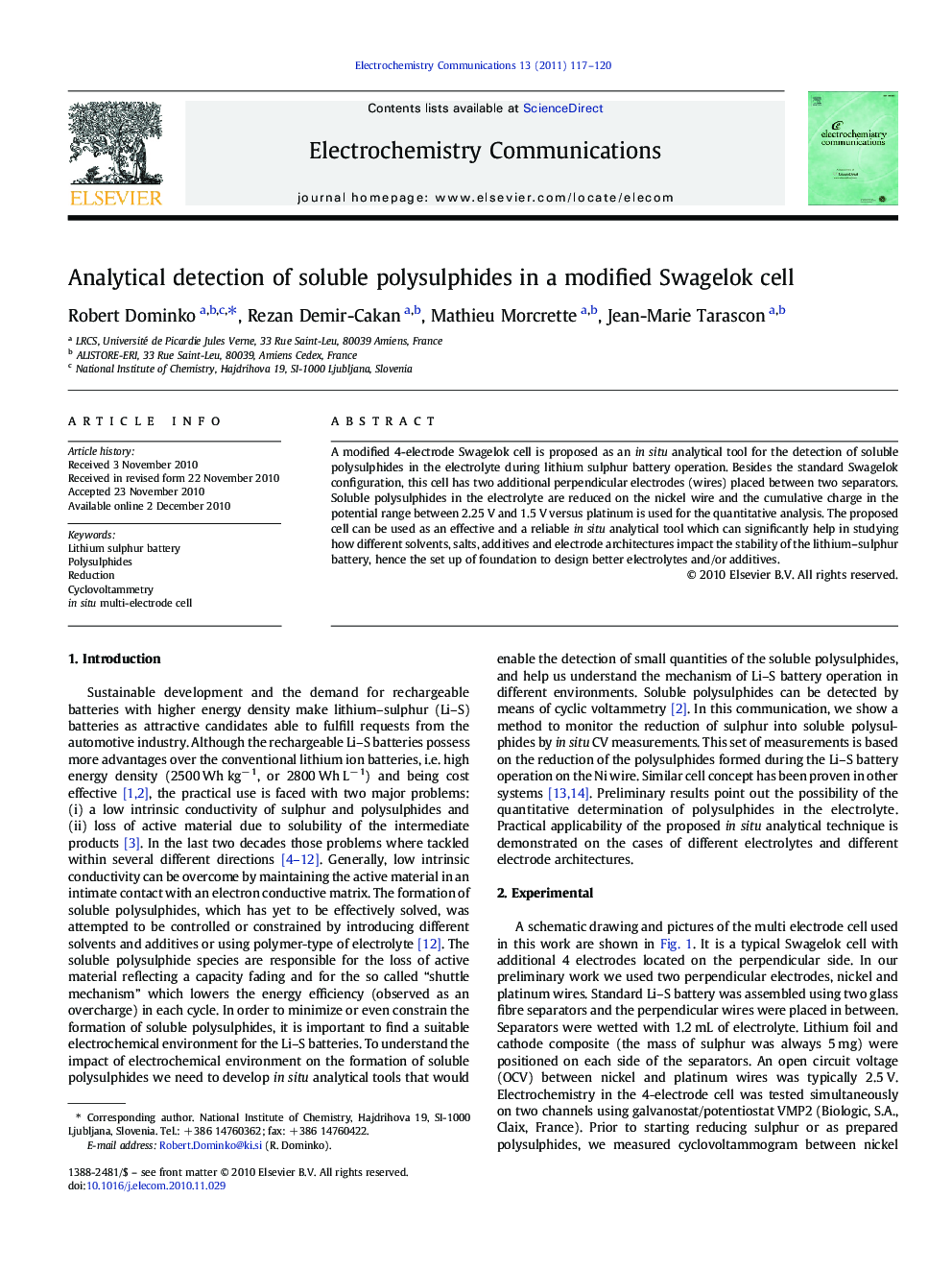| Article ID | Journal | Published Year | Pages | File Type |
|---|---|---|---|---|
| 10266906 | Electrochemistry Communications | 2011 | 4 Pages |
Abstract
A modified 4-electrode Swagelok cell is proposed as an in situ analytical tool for the detection of soluble polysulphides in the electrolyte during lithium sulphur battery operation. Besides the standard Swagelok configuration, this cell has two additional perpendicular electrodes (wires) placed between two separators. Soluble polysulphides in the electrolyte are reduced on the nickel wire and the cumulative charge in the potential range between 2.25Â V and 1.5Â V versus platinum is used for the quantitative analysis. The proposed cell can be used as an effective and a reliable in situ analytical tool which can significantly help in studying how different solvents, salts, additives and electrode architectures impact the stability of the lithium-sulphur battery, hence the set up of foundation to design better electrolytes and/or additives.
Related Topics
Physical Sciences and Engineering
Chemical Engineering
Chemical Engineering (General)
Authors
Robert Dominko, Rezan Demir-Cakan, Mathieu Morcrette, Jean-Marie Tarascon,
